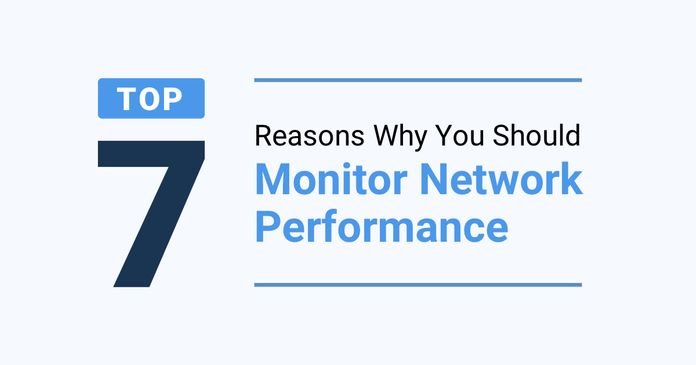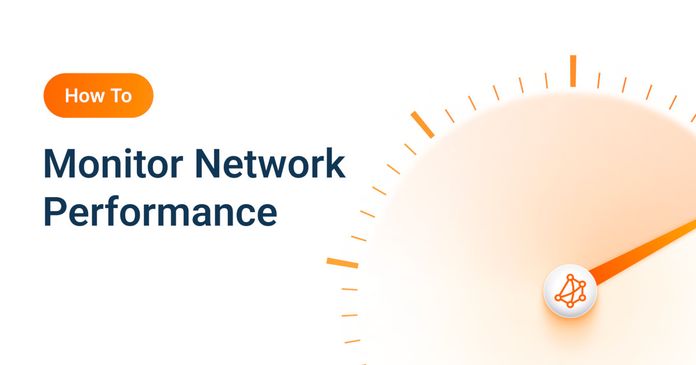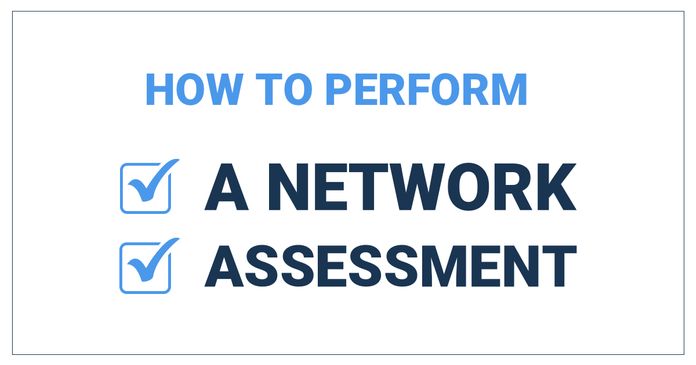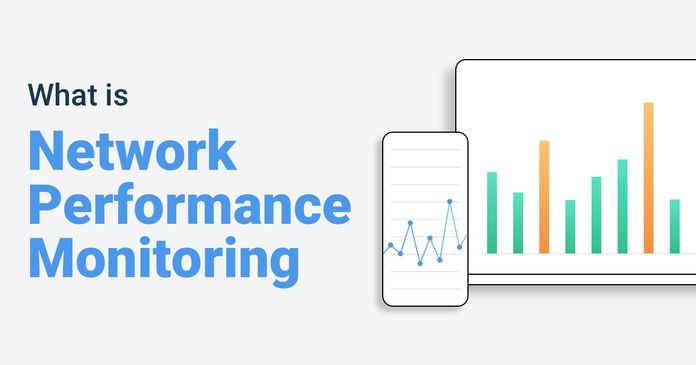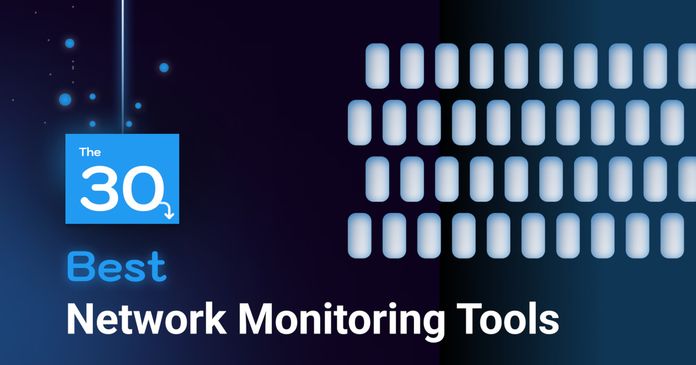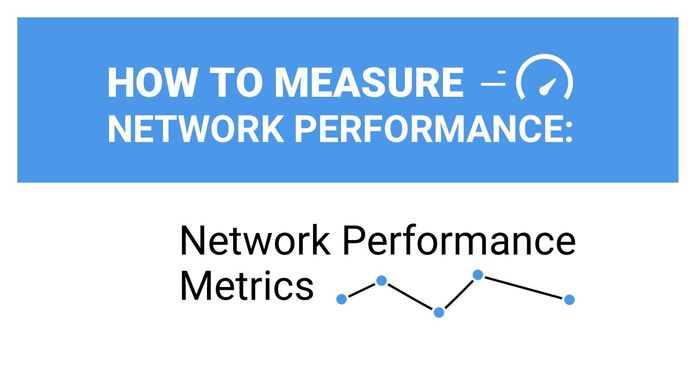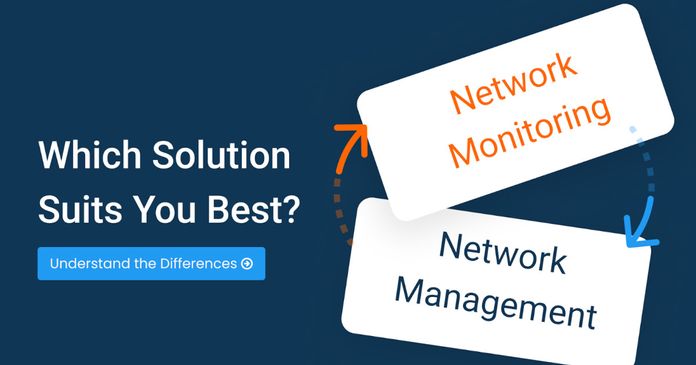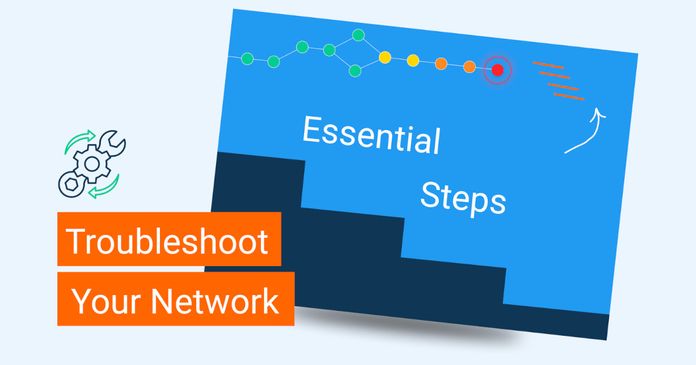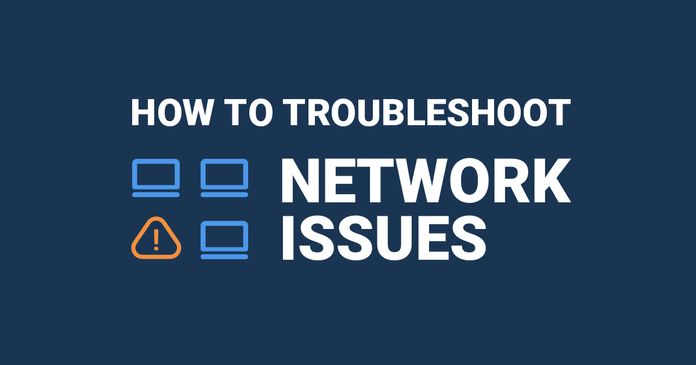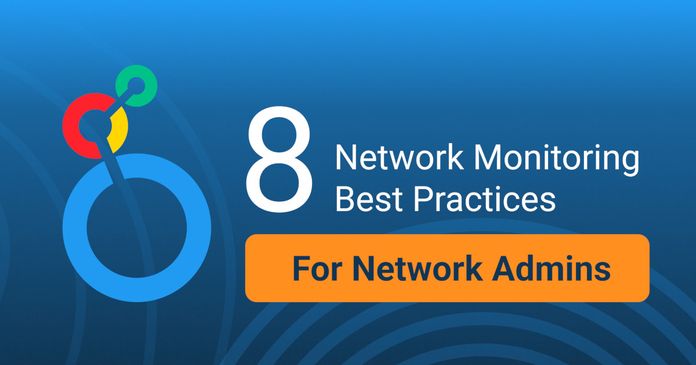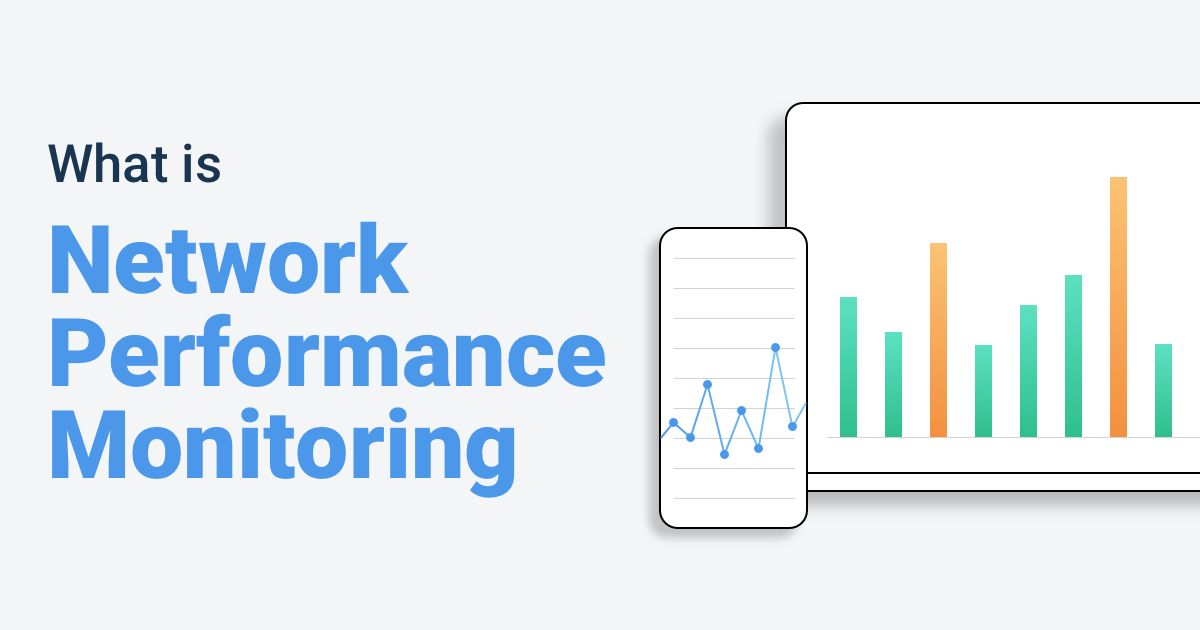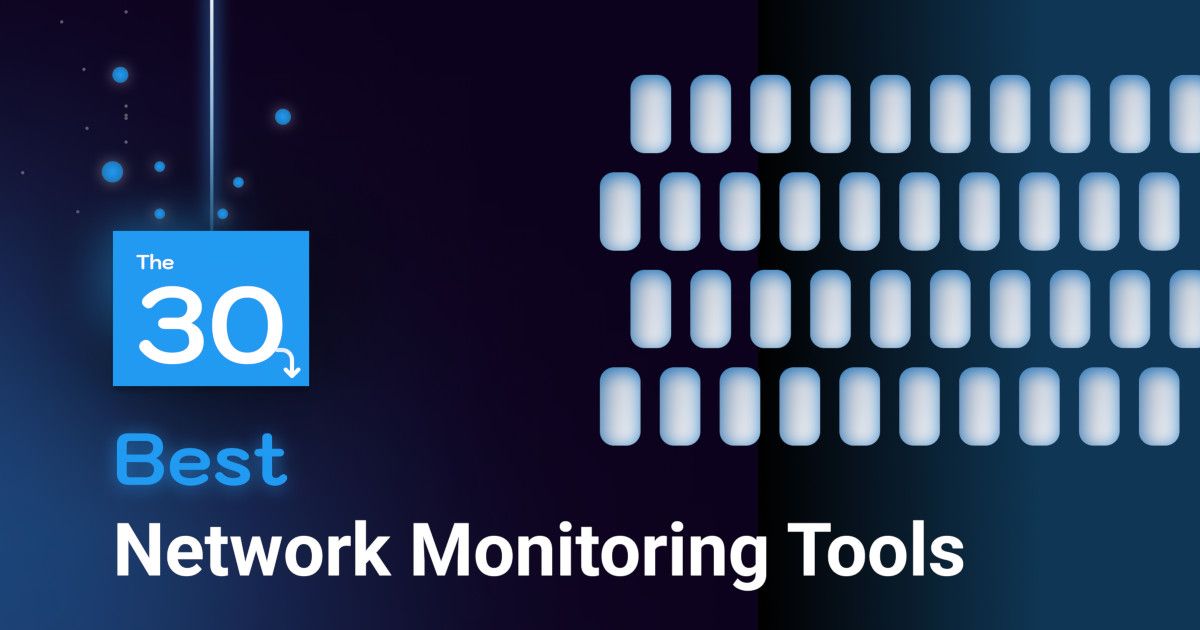Table of Contents
Table of Contents
' Whether you’re a seasoned IT professional or just beginning to explore the intricacies of network monitoring, you may have heard about "Network Monitoring" and how important it is to ensure that your network, and all its related applications, services and devices, are working as they should be.
This article provides a comprehensive, bird’s-eye overview of network monitoring, covering everything from the basics to network monitoring types, tools and techniques. We've packed this guide with additional resources and in-depth articles that allow you to dive deeper into specific areas of interest. Whether you want to understand the fundamentals, explore use cases, or find the best tools for your needs, this guide is designed to help you cut through the noise and get straight to the information you need.
Network monitoring is a critical IT practice that involves continuously assessing and monitoring the performance, security, and availability of a network. Network monitoring goes beyond just overseeing devices; it also ensures that the entire network is performing well enough to sustain all the applications and services it manages, such as Internet connectivity, voice and video applications, CRMs, ERPs, and more. By systematically collecting and analyzing data on various network metrics, network monitoring tools help IT teams detect and respond to issues in real-time, often before end users are even aware of a problem.
At its core, network monitoring is about ensuring that a network is running smoothly and efficiently, enabling businesses to maintain high levels of network performance and service availability. This process is not just about spotting problems but also about understanding network behaviour, optimizing resource use, and ensuring that the network can meet current and future demands.

For instance, network monitoring tools can alert administrators to a wide range of issues, such as increased latency, packet loss, or security threats. By providing visibility into these and other metrics, network monitoring enables IT teams to quickly diagnose and address issues, reducing the risk of downtime, enhancing security, and ensuring a positive user experience.
Moreover, network monitoring is essential for maintaining compliance with industry standards and regulations, as it provides the data needed to demonstrate that a network is secure, reliable, and well-managed.
Learn more: What is Network Monitoring?
Network monitoring goes beyond just telling you if your network is up or down. It's about understanding the quality and performance of your network and helping you continuously optimize the performance of your core applications and services.
For any organization that relies on a stable and efficient network to support its operations, network monitoring is an investment that is essential for the health of your network, and the sanity of your IT team! Businesses depend heavily on their IT infrastructure to deliver products, services, and communication, and with so many problems that can arise, you need a tool to keep track.
One of the primary reasons network monitoring is crucial is its ability to prevent downtime. Network downtime can lead to significant losses in productivity, revenue, and customer trust. By continuously monitoring network performance, IT teams can identify and resolve issues before they escalate into larger problems that could disrupt business operations.

Another key benefit of network monitoring is its contribution to network optimization. By analyzing performance data, organizations can identify inefficiencies, optimize resource allocation, and plan for future growth. This proactive approach ensures that the network can handle increased traffic and adapt to changing business needs, all while maintaining high levels of performance.
Furthermore, network monitoring is essential for troubleshooting. When issues do arise, having real-time data and historical performance metrics at hand enables IT teams to quickly pinpoint the root cause and implement solutions with minimal disruption.
It's also about improving user experience and helping IT teams quickly understand and troubleshoot network issues raised by user complaints. Many businesses lack the resources or expertise to handle network problems and are often unprepared when users report issues. Network monitoring helps bridge this gap by providing real-time insights and diagnostics, enabling IT teams to respond faster and more effectively. This not only improves response times but also enhances the overall reliability and stability of the network, ensuring a smoother experience for both users and businesses.
In essence, network monitoring is important because it empowers organizations to maintain a high-performing, secure, and reliable network infrastructure. It transforms IT management from a reactive to a proactive practice, ensuring that businesses can meet their operational goals without interruption.
Learn more: Top 7 Reasons Why You Should Monitor Network Performance
Learn the 7 reasons to monitor network performance & why network performance monitoring is important to troubleshoot issues & optimize end-user experience.
Learn more

Network monitoring is a dynamic process that involves a range of technologies and techniques to continuously observe and manage a network’s health and performance. Understanding how network monitoring works is essential for appreciating its role in maintaining a reliable and efficient IT infrastructure.
At its core, network monitoring involves several key components:
Network monitoring involves collecting data from every component of your network, not just devices like routers and switches. Using protocols such as SNMP, ICMP, Packet Capture (Passive Monitoring), Synthetic Monitoring (Active Monitoring), and Real-Traffic Monitoring, it gathers key metrics like bandwidth usage, latency, packet loss, and device status. This comprehensive approach ensures the entire network is monitored for optimal performance and reliability.

Once the data is collected, it is aggregated and analyzed to provide insights into network performance. Monitoring tools use algorithms and analytics to detect patterns, identify anomalies, and assess overall network health. This analysis helps in understanding the current state of the network and predicting potential issues.
 Screenshot from Obkio's Network Monitoring tool
Screenshot from Obkio's Network Monitoring tool
Data visualization is a critical aspect of network monitoring. Monitoring tools present the collected data through dashboards and graphical interfaces, making it easier for network administrators to interpret complex information. Visual representations such as graphs, charts, and maps provide a clear view of network performance and facilitate quick decision-making.
 Screenshot from Obkio's Network Monitoring tool
Screenshot from Obkio's Network Monitoring tool
Real-time alerting is a fundamental feature of network monitoring. When the monitoring system detects a deviation from normal performance – such as increased latency, device failures, or security breaches – it generates alerts and notifications. These alerts are sent to IT staff via email, SMS, or through monitoring dashboards, allowing for immediate action.
Network monitoring tools also assist in troubleshooting by providing historical data and performance metrics. This historical data helps IT teams trace back issues to their origin and understand how they developed over time. Detailed reports generated by the monitoring system offer insights into network performance trends and help in strategic planning and optimization.
In summary, network monitoring works by continuously collecting, analyzing, and visualizing data from various network components. It enables IT teams to maintain network performance, detect issues in real time, and make informed decisions to ensure the network operates smoothly and securely. Data teams can connect Google Sheets to SQL Server to seamlessly transfer and manage large datasets, enabling more efficient analysis and reporting.
Learn more: How to Monitor Network Performance
Discover how to monitor network performance effectively with key steps & best practices. Optimize your network with Obkio's NPM tool for seamless operations.
Learn more

A network monitoring tool is designed to provide comprehensive oversight of network performance and health. Understanding the key network monitoring features of these tools is essential for selecting the right solution for your organization’s needs.
Here’s a look at some of the most important features you should look for:
Network monitoring is done differently depending on the tool, using either active or passive techniques. Active monitoring, like Synthetic Monitoring, simulates network traffic to detect issues, while passive monitoring, such as Packet Capture, analyzes real-time data as it flows through the network. This allows real-time tracking of network performance, traffic, and device status, giving you immediate visibility into potential issues. By detecting and addressing problems before they impact users, real-time monitoring helps maintain optimal network health and swift response times to any anomalies or failures.
Effective network monitoring tools come with customizable alerts and notifications. These features notify you when specific thresholds are breached or when unusual activity is detected. Alerts can be configured to be sent via various channels such as email, SMS, or through the tool’s dashboard, ensuring that IT teams are informed of critical issues in a timely manner. When using email communication, it's crucial to validate your domain’s authenticity with an SPF checker, preventing spoofing and ensuring that alerts are delivered securely.
Historical data tracking and reporting are crucial for analyzing network performance trends over time. This feature allows you to review past performance, identify recurring issues, and assess the impact of changes or optimizations. Detailed reports and charts help in strategic planning and provide valuable insights for decision-making.
Network visualization tools offer graphical representations of network topology, traffic flow, and device status. Visualization features such as maps, graphs, and charts make it easier to understand complex network structures and performance metrics. This visual insight helps quickly identify problem areas and understand the network’s overall health.
Network monitoring tools provide a range of network performance metrics, such as bandwidth usage, latency, packet loss, and uptime. Analyzing these metrics helps evaluate the network’s performance and identify potential bottlenecks or inefficiencies. Advanced tools offer detailed analytics to help in troubleshooting and optimization.
Customizable network monitoring dashboards allow you to tailor the monitoring interface to display the most relevant data and metrics for your needs. This feature enhances usability and ensures that the information presented is aligned with your monitoring goals and priorities.
Many network monitoring tools come with integrated troubleshooting features such as Traceroutes, Ping, and Device Monitoring. These tools help IT teams pinpoint the root cause of network issues, allowing for faster diagnosis and resolution of performance bottlenecks or failures.

Network monitoring is a complex practice with a wide range of applications across various aspects of IT management. Understanding the common use cases for network monitoring can help you appreciate its value and tailor it to meet your specific needs.

Here are some of the most common use cases:
Regular network audits and assessments are crucial for evaluating the health, performance, and security of your network. Network monitoring tools can provide detailed insights into network topology, device performance, and traffic patterns. These insights help in identifying vulnerabilities, optimizing configurations, and ensuring that the network is compliant with industry standards and regulations.
Learn how to perform a network assessment with Obkio Network Monitoring to optimize network performance for a new service deployment or migration.
Learn more

When network issues arise, effective troubleshooting is essential for minimizing downtime and restoring normal operations. Network monitoring tools offer real-time visibility into network performance and historical data, making it easier to identify the root cause of problems such as latency, packet loss, or device failures. This capability accelerates the troubleshooting process and improves overall network reliability.
*Learn more**: How to Troubleshoot Network Performance Issues
Learn the essential techniques, steps, and tools for network troubleshooting with our ultimate survival guide. Keep your network running smoothly and secure.
Learn more

Monitoring network devices like routers, switches, and servers is vital for maintaining their operational health and performance. Network monitoring tools track device status, performance metrics, and resource utilization. This allows IT teams to detect hardware failures, optimize device configurations, and ensure that all components are functioning correctly.
Learn more: Device Monitoring
 Screenshot from Obkio's Network Monitoring Tool
Screenshot from Obkio's Network Monitoring Tool
Voice over IP (VoIP) services are increasingly critical for business communication. Network monitoring tools can assess VoIP performance by measuring call quality, latency, jitter, and packet loss. This monitoring ensures that VoIP services remain reliable and that users experience clear and uninterrupted communication.
Learn more: VoIP Monitoring

Unified Communications (UC) systems integrate various communication channels, such as voice, video, and messaging, into a single platform. Monitoring UC performance helps ensure that all components work seamlessly together. Network monitoring tools track metrics related to UC services, ensuring smooth operation and high-quality user experiences.
Learn more: UC Monitoring Use Case

For organizations using Software-Defined WAN (SD-WAN) or Multi-Protocol Label Switching (MPLS) private networks, monitoring is crucial for managing and optimizing network performance. Network monitoring tools provide visibility into traffic patterns, link performance, and overall network efficiency, helping to ensure that these advanced networking solutions deliver the expected benefits.
Learn more: SD-WAN and MPLS Private Networks Monitoring Use Case

As remote work becomes more common, monitoring remote networks and offices and remote working locations are becoming more and more popular. Remote network monitoring tools help businesses and remote users monitor network performance and user experience for remote sites and user devices, ensuring that remote connections are stable, secure, and meet organizational standards.
Learn more: Remote Network Monitoring

With the increasing reliance on cloud services and internet-based applications, monitoring these environments is crucial. Network monitoring tools track the performance and availability of cloud services and Internet connections, helping to manage the performance of applications and services hosted in the cloud.
Learn more: Cloud Network Monitoring

Network Performance Monitoring (NPM) focuses on monitoring the network from an end-user perspective. Unlike traditional monitoring, NPM provides end-to-end visibility by measuring performance between two points in the network, ensuring that the user experience is accurately captured and optimized. It involves the continuous measurement and analysis of network performance to ensure that all components are functioning efficiently and effectively.
 Screenshot from Obkio's Network Monitoring Tool
Screenshot from Obkio's Network Monitoring Tool
While traditional monitoring checks if your network infrastructure is up or down, NPM goes beyond that by assessing the quality of your network connections. It measures network performance between two points, ensuring that the end-user experience is optimized. Understanding what NPM entails highlights its critical role in maintaining a high-performing, reliable network.
Network Performance Monitoring focuses on tracking and evaluating various performance metrics to gauge the health and efficiency of the network. This process helps identify performance bottlenecks, ensure optimal resource utilization, and enhance overall network reliability. By continuously monitoring network performance, organizations can proactively address issues and maintain a seamless user experience.
- Bandwidth Usage: Measures the amount of data transmitted over the network. Monitoring bandwidth usage helps identify congestion and ensure that the network can handle peak traffic periods without degradation in performance.
- Latency: The time it takes for data to travel from the source to the destination. High latency can impact application performance and user experience, making it essential to monitor and manage this metric effectively.
- Packet Loss: Refers to the percentage of data packets that are lost during transmission. Packet loss can result in reduced application performance and connectivity issues, so it is crucial to track and minimize it.
- Jitter: The variability in packet delay. Jitter can affect real-time applications such as VoIP and video conferencing, making it important to monitor and control it to maintain quality.
- Network Availability: Tracks the operational status of network devices and services. Ensuring high uptime and availability is crucial for minimizing downtime and maintaining business continuity.
 Screenshot from Obkio's Network Monitoring Tool
Screenshot from Obkio's Network Monitoring Tool
- Proactive Issue Resolution: Network performance monitoring allows organizations to continuously track key metrics, enabling them to identify and resolve both network downtime (hard issues) and performance slowdowns (soft issues) before they escalate. This proactive approach minimizes disruptions and ensures a reliable network.
- Optimized Network Performance: By analyzing performance data, organizations can fine-tune network configurations and optimize resource allocation. This leads to improved efficiency and an overall boost in network performance, ensuring that critical services run smoothly.
- Enhanced User Experience: Monitoring ensures that applications like video streaming, online gaming, and VoIP perform optimally, enhancing the end-user experience. Addressing performance issues promptly reduces downtime and maintains high-quality service for users.
- Data-Driven Decision-Making: Performance metrics offer insights into network behavior, usage patterns, and potential bottlenecks. This data empowers organizations to make informed decisions about network upgrades, capacity planning, and resource allocation, leading to more strategic network management.
Learn more: Network Performance Monitoring
Learn about network performance monitoring to optimize network performance. Discover key network metrics, tools & techniques & the benefits for businesses.
Learn more

Real-Time Network Monitoring is an essential component of modern network monitoring that focuses on providing immediate visibility into the network's status and performance. This proactive approach is crucial for detecting and addressing issues as they occur, ensuring that network services remain reliable and efficient.
Real-time network monitoring involves continuously tracking network activity, performance metrics, and system health in the present moment. Unlike historical analysis, which looks at past data, real-time monitoring provides up-to-the-minute information, allowing IT teams to respond swiftly to any network anomalies or issues.
Master real-time network monitoring with our comprehensive guide. Learn essential tips, tools, and techniques for seamless network management.
Learn more

- Immediate Alerts and Notifications: Real-time monitoring tools generate instant alerts when performance thresholds are breached or when abnormal activity is detected. These alerts can be configured to notify IT staff via various channels such as email, SMS, or through the monitoring dashboard, enabling quick response and resolution.
- Live Performance Metrics: Real-time monitoring tools display live data on network performance metrics such as bandwidth usage, latency, packet loss, and jitter. This live view helps in assessing current network conditions and identifying issues that may impact performance.
- Real-Time Visualization: Many real-time monitoring tools offer graphical representations of network activity, such as dashboards, charts, and network maps. These visualizations make it easier to understand complex data and spot potential issues quickly.
- Instant Troubleshooting: With real-time data at their disposal, IT teams can perform immediate troubleshooting to identify and resolve network problems. This capability minimizes downtime and ensures that services remain operational.
- Current Device Status: Real-time monitoring includes tracking the status of network devices such as routers, switches, and servers. It provides live updates on device health, connectivity, and performance, helping to quickly address any hardware issues.
Learn more: Real-Time Network Monitoring

Network Monitoring Tools are software applications designed to oversee and monitor network performance, health, and security. They provide insights into various network metrics, helping IT teams ensure optimal network operation and troubleshoot issues.
Not all networks are the same – some require advanced, feature-rich solutions, while others only need basic monitoring and issue detection. The best tool for your network will depend on its size, the number of users and devices, and the specific applications and services it supports. Choosing the right tool ensures that it fits your network’s unique needs, providing the most effective monitoring.

Passive Network Monitoring Tools: Monitor network traffic by capturing and analyzing packets without actively sending probes or generating traffic. Useful for monitoring network behaviour and detecting anomalies without impacting network performance.
Active Network Monitoring Tools Generate synthetic traffic to proactively monitor network performance without capturing real-user traffic. Helps measure network performance by actively interacting with the network and proactively identifying network issues before they impact real users.
Network Performance Monitoring Tools Track metrics related to network performance, such as bandwidth usage, latency, and packet loss. Essential for ensuring network efficiency and identifying performance bottlenecks.
Network Device Monitoring Tools Focus on monitoring the health and status of network devices like routers, switches, and servers. Provides insights into device performance and alerts for hardware failures or configuration issues.
Synthetic Network Monitoring Tools Use synthetic traffic or user scenarios to test and measure network performance.Helps in evaluating how well the network performs under simulated load conditions to proactively identify issues before they impact real user traffic.
SNMP Network Monitoring Tools Utilize the Simple Network Management Protocol (SNMP) to collect data from network devices. Provides detailed information on device performance and network traffic through SNMP traps and polls.
Cloud Network Monitoring Tools Monitor network performance and health in cloud environments, including public, private, and hybrid clouds. Essential for managing cloud-based resources and ensuring cloud service performance.
Flow-Based Network Monitoring Tools Analyze network flow data, such as NetFlow, sFlow, or IPFIX, to understand traffic patterns and usage. Useful for identifying traffic patterns, bandwidth usage, and potential bottlenecks.
Distributed Network Monitoring Tools Monitor networks across multiple locations or distributed environments. Helps in managing large or geographically dispersed networks by providing centralized visibility.
Remote Network Monitoring Tools Allow for monitoring network performance and health from remote locations. Ideal for managing networks spread across different locations or for remote IT teams.
Application Performance Monitoring Tools Focus on monitoring the performance of applications running on the network. Tracks application metrics such as response times and transaction volumes to ensure application efficiency.
Network Packet Monitoring Software Captures and analyzes network packets to diagnose network issues and security threats. Provides detailed insights into network traffic and helps in troubleshooting and security analysis.
Network Traffic Monitoring Software Monitors and analyzes network traffic to understand usage patterns and detect anomalies. Essential for managing bandwidth usage, optimizing network performance, and identifying potential security threats.
Network Security Monitoring Tools Focus on detecting and responding to security threats by analyzing network traffic and system logs. Helps in identifying potential security breaches, vulnerabilities, and unauthorized access.
Learn more: Different Types of Network Monitoring Tools
Network monitoring tools come in various forms, each designed to address specific monitoring needs. They can be broadly categorized into different types, such as those focusing on network performance, device health, security, and more.


Here’s a look at some well-known network monitoring tools and what they bring to the table:
Obkio Network Performance Monitoring Obkio is an end-to-end, synthetic Network Performance Monitoring solution that delivers end-to-end visibility of network performance from the end-user perspective. Its primary focus is on real-time monitoring and proactive troubleshooting, ensuring that you have a clear view of network health and performance at all times.

Features: Obkio stands out with its robust feature set, which includes:
- Network Monitoring Agents and Synthetic Traffic: Uses both active and passive monitoring techniques to continuously assess network performance. This includes synthetic traffic to simulate real-world conditions and identify issues like VoIP and video slowdowns in seconds.
- End-to-End Network Monitoring: Tracks performance across various network types including SD-WAN, MPLS, LAN, WAN, and L3 VPN, providing a complete picture of network health from the user’s perspective.
- Real-Time Alerts: Notifies you instantly of any performance issues or anomalies, allowing for swift action to mitigate potential disruptions.
- Visual Traceroute: Provides a graphical representation of network paths and performance, making it easier to identify and diagnose network issues.
- Easy-to-Understand Reporting: Offers clear and actionable reports that help you quickly grasp performance trends, pinpoint problems, and make informed decisions for network improvements.
Use Cases: Obkio is ideal for organizations seeking a robust and intuitive solution for comprehensive network performance monitoring. It is particularly valuable for businesses that need to manage and troubleshoot complex networks and applications, ensuring optimal performance and enhancing the end-user experience.
Obkio's Free 14-Day Trial

To help you start monitoring and troubleshooting network issues in minutes, Obkio offers a free 14-day trial of all their premium features. With the help of Obkio's Onboarding Wizard, users can start collecting performance data and identifying network issues in minutes.
- 14-day free trial of all premium features
- Deploy in just 10 minutes
- Monitor performance in all key network locations
- Measure real-time network metrics
- Identify and troubleshoot live network problems

Nagios An open-source monitoring tool that provides comprehensive monitoring of network services, host resources, and application performance.
- Features: Offers alerting, reporting, and customizable plugins for various monitoring needs.
- Use Cases: Ideal for monitoring network devices, servers, and services, with strong community support and flexibility.
- Learn more: Obkio vs. Nagios
SolarWinds Network Performance Monitor (NPM)
- Functionality: A commercial tool known for its robust performance monitoring and management capabilities.
- Features: Provides real-time network performance monitoring, network topology mapping, and customizable dashboards.
- Use Cases: Suitable for enterprises needing detailed insights into network performance and device health.
- Learn more: Obkio vs. SolarWinds NPM
Paessler PRTG Network Monitor
- Functionality: A versatile tool that offers monitoring for network traffic, bandwidth usage, and various devices.
- Features: Includes a wide range of sensors, real-time alerts, and detailed reporting.
- Use Cases: Best for organizations looking for an all-in-one solution with extensive monitoring capabilities.
- Learn more: Obkio vs. Paessler PRTG
Zabbix
- Functionality: An open-source monitoring solution that provides real-time monitoring of network devices and applications.
- Features: Offers high scalability, detailed reporting, and an extensive range of monitoring options.
- Use Cases: Ideal for businesses seeking a customizable, open-source tool with a strong feature set.
- Learn more: Obkio vs. Zabbix
Useful resources:
- 30 Network Monitoring Tools With All The Information You Need In 2025
- Obkio vs. Other Network Monitoring Solutions
Discover the top 30 network monitoring tools that provide you with all the information you need to keep your network running smoothly.
Learn more

When it comes to network monitoring, organizations have two primary options: software-based monitoring and hardware-based monitoring. Each approach has its unique advantages and limitations, and understanding the differences between them can help you make an informed decision based on your network monitoring needs.

Network Monitoring Software refers to applications and tools that run on servers or computers to monitor network activities. These tools are installed on your network devices or servers and use various protocols to gather data, analyze performance, and provide insights.
Key Characteristics of Software-Based Network Monitoring
- Flexibility and Customization: Software solutions offer a high degree of customization, allowing you to configure alerts, dashboards, and reports according to your specific needs.
- Cost-Effectiveness: Often more affordable than hardware solutions, especially for smaller networks or businesses.
- Scalability: Can be easily scaled to accommodate growing networks by adding more software licenses or features.
- Integration: Typically integrates well with other software tools, such as ticketing systems, for a comprehensive monitoring solution.
- Examples: SolarWinds Network Performance Monitor, Paessler PRTG, Obkio.
Hardware-Based Monitoring involves physical devices or appliances installed within the network to perform monitoring functions. These devices are dedicated to monitoring tasks and usually come with their own built-in sensors and analytics capabilities.
Key Characteristics of Hardware-Based Network Monitoring
- Dedicated Resources: Hardware solutions are designed specifically for monitoring, often providing more robust performance and reliability.
- Real-Time Monitoring: Generally capable of providing real-time data with minimal latency, as they operate independently of other network traffic.
- Comprehensive Monitoring: Often includes advanced features and capabilities, such as traffic analysis and in-depth protocol analysis.
- Higher Initial Investment: Typically requires a higher upfront cost for purchasing and installing the hardware.
- Examples: NetFlow analyzers, and dedicated network performance appliances.
Deployment and Maintenance
- Software: Requires installation and regular updates. Maintenance involves managing software licenses, ensuring compatibility with other tools, and troubleshooting software issues.
- Hardware: Involves physical installation and periodic maintenance. Hardware needs to be managed in terms of space, power, and physical access.
Cost Considerations
- Software: Lower initial cost but may include ongoing subscription fees or licensing costs. Often more cost-effective for smaller or medium-sized businesses.
- Hardware: Higher initial cost with a one-time purchase price. Can be more expensive due to installation and maintenance requirements.
Performance and Scalability
- Software: Scales easily by adding licenses or features. Performance can be influenced by the server's capabilities and network load.
- Hardware: Provides dedicated resources, which can offer consistent performance. Scaling may require additional hardware units or upgrades.
Integration and Flexibility
- Software: Highly flexible and integrates with other software systems. Allows for customization of monitoring parameters and reporting.
- Hardware: May offer limited flexibility compared to software. Integration with other systems depends on the hardware’s capabilities and interfaces.
Real-Time Capabilities
- Software: Can provide real-time monitoring, but performance may be affected by network congestion or server load.
- Hardware: Often excels in providing real-time data with minimal latency, as it operates independently of other network traffic.

Selecting the right network monitoring tool is crucial for ensuring your network runs smoothly and efficiently. With so many options available, making the right choice can seem daunting. However, by understanding your network's specific needs and the features offered by different tools, you can find a solution that fits perfectly.
Before diving into the specifics of network monitoring tools, it’s essential to assess your network environment. Consider the following questions:

- What is the size of your network? Larger networks might require more robust tools with advanced features, while smaller networks could benefit from simpler, more cost-effective solutions.
- What types of devices are on your network? Different tools offer varying levels of support for network devices like routers, network switches, servers, and IoT devices.
- What are your primary monitoring goals? Are you focused on performance optimization, security monitoring, troubleshooting, or a combination of these?
- Do you need real-time monitoring? Some tools provide real-time insights, while others focus on historical data analysis.
- What is your budget? Network monitoring tools range from free open-source solutions to high-end enterprise-grade platforms.
Answering these questions will give you a clearer picture of the features and capabilities you need in a network monitoring tool.
When evaluating network monitoring tools, there are several key features you should consider to ensure the tool meets your network’s requirements:
Scalability for Your Network: Ensure the tool can grow with your network, accommodating additional devices, users, and traffic without compromising performance.
Ease of Use: The tool should have an intuitive interface that allows you to quickly access important information and perform tasks without a steep learning curve.
Customization to Meet Your Network Monitoring Goals: Look for tools that allow you to customize dashboards, alerts, and reports to match your specific needs and preferences.
Real-Time Network Monitoring: eal-time data is crucial for promptly identifying and responding to issues as they arise.
Support for Various Network Monitoring Protocols: Ensure the tool supports key network monitoring protocols, such as SNMP, NetFlow, and IP SLA, to monitor different aspects of your network effectively.
Cost-Effectiveness: Evaluate the total cost of ownership, including initial purchase, licensing fees, maintenance, and potential upgrade costs.
- Learn more: Network Monitoring Solution Buyer’s Guide
Confidently navigate the network monitoring tools landscape with our ultimate buyer's guide. Expert insights, use cases, and tips for informed choice
Learn more

Network monitoring metrics are the key data points that provide insights into the performance, health, and reliability of a network. These metrics are essential for understanding how well your network is functioning and identifying potential issues before they escalate into significant problems.
These metrics allow network administrators to monitor and manage the network effectively, ensuring optimal performance and minimizing downtime.

Some of the most important metrics include:
Latency: Latency, or delay, is the time it takes for data to travel from one point in the network to another. High latency can cause slow application performance and is particularly critical for real-time applications like VoIP or video conferencing.
Jitter: Jitter refers to the variability in packet arrival times. Inconsistent packet delivery can lead to poor voice and video quality in real-time communications.
Packet Loss: Packet loss occurs when data packets fail to reach their destination. It can cause disruptions in communication, reduce application performance, and indicate underlying network issues.

Bandwidth Utilization: Bandwidth utilization measures the percentage of available bandwidth being used. Monitoring this metric helps prevent network congestion and ensures that critical applications have the necessary resources.
Throughput: Throughput is the actual rate at which data is successfully transmitted across the network. It is a key indicator of network efficiency and performance.
Availability/Uptime: Availability or uptime measures the percentage of time the network is operational. High availability is crucial for ensuring that users can access network resources whenever they need them.
Error Rates: Error rates track the number of errors encountered in data transmission. High error rates can indicate issues with network hardware or cabling.

Response Time: Response time measures how long it takes for a server or network device to respond to a request. Slow response times can affect user experience and indicate performance bottlenecks.
CPU and Memory Usage: Monitoring the CPU and memory usage of network devices like routers, switches, and servers helps ensure they are not overloaded, which could lead to performance degradation.
Network Device Health: This metric involves monitoring the status of network devices, including temperature, power supply, and overall health, to prevent hardware failures.
Learn more: How to Measure Network Performance Metrics
Learn how to measure network performance with key network metrics like throughput, latency, packet loss, jitter, packet reordering and more!
Learn more

Network monitoring and network management are two critical functions in maintaining a robust and efficient network, but they serve distinct purposes and involve different sets of tasks. Many times, people may use the two terms interchangeable, but they really aren't the same thing.
Network monitoring is about understanding the performance of your network, identifiyng performance issues, and monitoring user experience and network health. While network management, is about managing and making changes to oyur network infrastructure.
Understanding the difference between these two concepts is essential for effectively managing your network infrastructure and ensuring seamless operations.
Network monitoring refers to the continuous observation and analysis of your network's performance, health, and overall status. It involves the use of specialized tools to track key metrics like latency, packet loss, bandwidth utilization, and uptime. The primary goal of network monitoring is to detect and alert administrators to any anomalies, issues, or potential threats that could impact network performance.
Key Functions of Network Monitoring:
- Real-Time Alerts: Network monitoring tools provide real-time alerts when they detect performance issues, allowing administrators to respond quickly to minimize disruptions.
- Data Collection: These tools continuously gather data on network traffic, device status, and other metrics, providing a comprehensive view of network health.
- Reporting: Network monitoring generates reports that offer insights into network performance trends over time, helping with capacity planning and optimization.

While network monitoring is about observing and reporting, network management encompasses a broader set of activities that involve actively controlling and maintaining the network. Network management is the process of administering, managing, and operating a network to ensure it runs efficiently and effectively. It includes tasks like configuring network devices, managing bandwidth, implementing security policies, and ensuring that the network meets the organization's performance and availability requirements.
Key Functions of Network Management:
- Configuration Management: This involves setting up and maintaining network devices like routers, switches, and firewalls to ensure they operate correctly and securely.
- Performance Management: Beyond monitoring, this includes actions taken to improve network performance, such as load balancing, traffic shaping, and optimizing resource usage.
- Security Management: Ensuring that the network is protected from threats through firewalls, intrusion detection systems, and regular security updates.
- Fault Management: Identifying, diagnosing, and resolving network issues to prevent or minimize downtime.
While network monitoring and network management are distinct functions, they are closely interconnected. Effective network management relies on the data and insights provided by network monitoring. For example:
- Proactive Management: Monitoring data helps administrators proactively optimize and troubleshoot the network by identifying potential issues before they lead to downtime.
- Informed Decision-Making: The insights gained from network monitoring inform management decisions, such as when to upgrade bandwidth, replace outdated equipment, or adjust security protocols.
- Efficient Troubleshooting: When issues arise, network monitoring provides the data needed to quickly diagnose and resolve problems, while network management tools are used to implement fixes.
Understanding the difference between network monitoring and network management is crucial for anyone responsible for maintaining a network. While monitoring provides the visibility needed to spot issues, management involves the actions taken to ensure the network runs smoothly. Together, they form a comprehensive approach to network administration that helps organizations maintain high levels of performance, security, and reliability.
Learn more: Network Monitoring and Management
Network monitoring vs. management? We simplify your choice! Learn key differences & make the right choice to optimize your network & business operations.
Learn more

Network performance is critical for ensuring smooth business operations, particularly in today's digital-first world where downtime or slow connections can lead to significant productivity losses and customer dissatisfaction. Network monitoring plays a vital role in enhancing network performance by providing real-time visibility, identifying potential issues, and helping IT pros and network admins proactively react to network issues before they affect end-user experience.
One of the most significant ways network monitoring improves performance is by enabling proactive issue detection. Continuous monitoring allows you to identify and address network issues before they escalate into serious problems.
- Minimizing Downtime: By identifying issues early, network monitoring helps prevent network outages and downtime, ensuring that your network remains operational and productive.
- Avoiding Performance Degradation: Detecting potential bottlenecks, such as excessive bandwidth usage or high latency, allows you to take corrective actions before they impact overall performance.
- Preventing Security Threats: Monitoring can also identify unusual traffic patterns that may indicate a security threat, enabling you to respond swiftly to protect your network.
 Screenshot from Obkio's Network Monitoring Tool
Screenshot from Obkio's Network Monitoring Tool
Network monitoring provides insights into how resources, such as bandwidth and processing power, are being used across the network. This information is crucial for optimizing resource allocation and ensuring that your network can handle its current and future demands efficiently.
- Load Balancing: Monitoring tools can help distribute network traffic more evenly across servers, preventing any single server from becoming overloaded and ensuring smooth performance.
- Capacity Planning: By analyzing usage trends, you can anticipate when additional resources will be needed and plan upgrades accordingly, avoiding performance slowdowns during peak usage times.
- Bandwidth Management: Monitoring helps you manage bandwidth more effectively, ensuring that critical applications have the necessary resources while minimizing wasteful usage.
When network issues arise, it’s essential to diagnose and resolve them quickly to minimize their impact. Network monitoring tools streamline the troubleshooting process by providing detailed data that helps you identify the root cause of problems.
- Faster Issue Resolution: Monitoring tools provide real-time data and historical insights, allowing you to quickly pinpoint where and when an issue occurred, which speeds up the troubleshooting process.
- Comprehensive Diagnostic Information: With access to detailed metrics such as latency, packet loss, and device status, network monitoring enables you to understand the underlying causes of performance issues, leading to more effective solutions.
- Reduced Impact on End Users: By resolving issues faster, you minimize the impact on end users, ensuring they experience consistent and reliable network performance.
Learn the essential steps to troubleshoot network issues effectively. Start with Obkio's Network Performance Monitoring tool for comprehensive network insights.
Learn more

Network monitoring is not just about fixing problems; it's also about continuously improving network performance over time. By providing ongoing visibility into how your network operates, monitoring tools help you make informed decisions that lead to long-term performance gains.
- Trend Analysis: Monitoring tools allow you to track performance trends over time, helping you identify patterns and make data-driven decisions to optimize your network.
- Ongoing Adjustments: With continuous monitoring, you can regularly adjust configurations, optimize traffic routing, and update hardware to keep your network running at peak efficiency.
- Performance Benchmarking: Monitoring enables you to set benchmarks for network performance and track progress toward achieving these goals, ensuring that your network continues to meet business needs.
Discover effective strategies and powerful tools to improve network performance. Unleash the full potential of your network and ensure seamless connectivity.
Learn more

In today's fast-paced digital environment, maintaining high network performance is crucial for business success. Network monitoring provides the tools and insights needed to ensure that your network operates efficiently, reliably, and securely. By enabling proactive monitoring, optimizing resource use, enhancing troubleshooting, and supporting continuous improvement, network monitoring is crucial for optimizing network performance and ensuring that core applications and services run smoothly, ultimately improving the end-user experience
Learn to use network optimization and monitoring to optimize network performance, improve your end-user experience, and compare performance from the past.
Learn more

Network troubleshooting is a critical process for identifying, diagnosing, and resolving network-related issues that can disrupt business operations. The complexity of modern networks, with their vast array of devices, applications, and services, makes troubleshooting challenging without the right tools and insights. Network monitoring is essential in this context, providing the data and visibility needed to troubleshoot effectively and efficiently.
One of the primary ways network monitoring aids troubleshooting is through early detection of network anomalies. Continuous monitoring allows you to spot potential problems as they arise, often before they affect end users or critical business operations.
- Preventative Action: By identifying issues early, you can take preventative measures to avoid more significant problems down the line, reducing the impact on your network and business.
- Minimizing Downtime: Early detection helps you address issues before they cause outages or significant slowdowns, ensuring that your network remains operational.
- Alerting and Notifications: Many network monitoring tools offer customizable alerting features that notify you of potential issues in real-time, enabling immediate action.
Learn how to troubleshoot network issues by identifying where, what, why network problems occur with Network Troubleshooting tools.
Learn more

Effective troubleshooting requires a complete understanding of the network’s performance at any given moment. Network monitoring provides a detailed overview of network health, including metrics like bandwidth usage, latency, packet loss, and device status.
- Identify Problem Areas: With comprehensive visibility, you can quickly pinpoint where issues are occurring in the network, whether it's a specific device, application, or connection.
- Correlate Events: Monitoring tools allow you to correlate different network events, helping you understand how issues in one part of the network might be affecting other areas.
- Historical Data Access: Access to historical performance data enables you to identify patterns or recurring issues that might be contributing to ongoing problems.

Network monitoring tools provide in-depth diagnostic data that is essential for identifying the root cause of network problems. This data goes beyond basic metrics, offering insights into network paths, device configurations, and more.
- Traceroutes: Monitoring tools often include traceroute features that help you map the path of data across the network, identifying where delays or failures occur.
- SNMP Monitoring: Simple Network Management Protocol (SNMP) monitoring provides detailed information about the health and status of network devices, which is crucial for diagnosing hardware-related issues.
- Packet Capture and Analysis: Some monitoring tools allow you to capture and analyze network packets, providing granular data that can be invaluable for troubleshooting complex problems.

Network monitoring simplifies and accelerates the troubleshooting process by providing tools that allow for quicker identification and resolution of issues. This is particularly important in large, complex networks where manual troubleshooting would be time-consuming and prone to error.
- Automated Diagnostics: Many monitoring tools offer automated diagnostics that can identify common issues and suggest potential solutions, reducing the time needed to diagnose problems.
- Real-Time Insights: The real-time nature of network monitoring ensures that you have up-to-date information when troubleshooting, allowing for immediate corrective action.
- Efficient Workflow Integration: Network monitoring tools can be integrated into existing IT workflows, ensuring that the troubleshooting process is seamless and that issues are resolved as part of the broader IT management strategy.

Put It to the Test: Trying Is the Ultimate Way to Learn!
Networks may be complex. But Obkio makes network monitoring easy. Monitor, measure, pinpoint, troubleshoot, and solve network problems.
- 14-day free trial of all premium features
- Deploy in just 10 minutes
- Monitor performance in all key network locations
- Measure real-time network metrics
- Identify and troubleshoot live network problems

Implementing network monitoring is essential for maintaining the health and performance of your network, but to truly maximize its effectiveness, it’s crucial to follow best practices. These practices help ensure that your network monitoring strategy is comprehensive, efficient, and aligned with your business goals.

Before setting up a network monitoring system, it’s important to define what you want to achieve. Are you aiming to improve network performance, enhance security, reduce downtime, or all of the above? Clear objectives help you choose the right tools, set up appropriate alerts, and focus on the most critical aspects of your network.
- Performance Goals: Identify key performance metrics such as latency, packet loss, and bandwidth usage.
- Security Goals: Focus on monitoring for unusual traffic patterns, unauthorized access, and potential security breaches.
- Operational Goals: Aim to reduce downtime and improve network reliability through proactive monitoring.

Selecting the appropriate network monitoring tools is crucial for effectively managing your network. Different tools offer various features, so it’s important to choose those that align with your specific needs, whether it’s real-time monitoring, historical data analysis, or advanced security features.
- Passive Monitoring Tools: For monitoring traffic and analyzing historical data.
- Active Monitoring Tools: For generating synthetic traffic to measure network performance in real-time.
- Cloud-Based Monitoring: Ideal for businesses with distributed or hybrid networks.

Prioritize monitoring the most critical parts of your network, such as routers, switches, firewalls, and key servers. These components are often the backbone of your network and, if they fail, can cause significant disruptions to your business operations.
- Ensure Business Continuity: By monitoring crucial devices and connections, you can quickly address issues that could lead to network downtime.
- Optimize Resource Allocation: Focus your monitoring efforts on areas that will have the most significant impact on network performance and reliability.
Alerts are a fundamental feature of any network monitoring system. Setting up proactive alerts ensures that you are notified of potential issues before they escalate into major problems. It’s important to configure these alerts to be both timely and actionable.
- Custom Thresholds: Define specific thresholds for various metrics like CPU usage, bandwidth, and latency to trigger alerts when they are breached.
- Prioritization: Set different levels of alerts (e.g., critical, warning, informational) to prioritize your response based on the severity of the issue.
- Avoid Alert Fatigue: Ensure that alerts are meaningful and not overly frequent to prevent alert fatigue, which can lead to missed critical notifications.

Networks evolve over time, with new devices, applications, and connections being added regularly. It’s essential to review and update your monitoring strategy periodically to ensure it remains aligned with your network’s current configuration and your business needs.
- Audit Your Network: Regularly audit your network to identify new devices or changes that need to be included in your monitoring setup.
- Reassess Goals: As your business grows, your network monitoring goals may change. Reassess and adjust your objectives and monitoring tools accordingly.
- Stay Informed: Keep up with the latest trends and technologies in network monitoring to ensure that your strategy leverages the most effective tools and practices.
Learn more: 8 Network Monitoring Best Practices
Explore essential network monitoring best practices for network admins, from choosing the right tools to troubleshooting internal and external issues.
Learn more

When it comes to choosing the best network monitoring tool, it's essential to find a solution that offers comprehensive monitoring capabilities, ease of use, and reliability. One tool that stands out in this regard is Obkio NPM.

Obkio is a cloud-based network performance monitoring and testing platform designed to help organizations monitor and optimize their network infrastructure and application performance. What sets Obkio apart is its ability to provide real-time insights into crucial network metrics like latency, packet loss, and network jitter, allowing users to troubleshoot and resolve network issues quickly.
Obkio offers a wide range of powerful monitoring tools that make it an all-in-one solution for network performance monitoring:
- Active Monitoring Agents: Obkio deploys active monitoring agents to provide a complete picture of network performance. Active agents simulate synthetic traffic to identify issues before they impact users to ensure ongoing network health.

User-Friendly Interface
One of Obkio’s strengths is its intuitive interface, which is designed to be easy to deploy and use. The platform's setup process is straightforward, requiring minimal training, so users can start monitoring their network quickly. The dashboard provides clear, real-time insights into network performance, making it easy for both IT professionals and non-technical users to understand and act on the data.
Suitable for All Sizes and Industries
Obkio is a versatile solution suitable for organizations of all sizes, from small businesses to large enterprises. Its flexibility makes it applicable across various industries, including professional services, manufacturing, finance, and more. Whether you're managing a single office or a global network, Obkio scales with your needs, offering reliable monitoring capabilities that ensure optimal network performance for all end-users.

Obkio offers a pricing model that is not only competitive but also transparent and straightforward.

- Flexible Plans: Obkio provides various pricing plans based on the number of monitoring agents, devices, and users. As the number of agents increases, the cost per agent decreases, making it a cost-effective solution as your network grows.
- Customizable Options: With Obkio’s Price Calculator, you can build a custom plan that fits your specific business needs and budget. This flexibility ensures that you only pay for what you need, without any hidden fees or unexpected charges.
- No Hidden Costs: Obkio’s pricing is based on a flat monthly fee per monitoring agent, device, and user, with no additional costs based on data usage, bandwidth, or other metrics that can be difficult to predict. This clarity makes it easier for organizations to budget for their network monitoring expenses.
- Free Trial: Obkio also offers a free trial, allowing organizations to test the platform and its features before committing to a paid plan. This trial period helps businesses evaluate whether Obkio meets their specific network monitoring needs.
Overall, Obkio is a reliable and effective network performance monitoring tool that can help organizations proactively manage their network infrastructure. Its combination of comprehensive monitoring tools, user-friendly interface, and transparent pricing makes it an ideal choice for businesses looking to ensure optimal network performance and enhance the end-user experience.

If you're looking for a network monitoring solution that offers real-time insights, ease of use, and a pricing model that won't leave you guessing, Obkio is the best tool for the job.
- 14-day free trial of all premium features
- Deploy in just 10 minutes
- Monitor performance in all key network locations
- Measure real-time network metrics
- Identify and troubleshoot live network problems

Network monitoring is more than just a technical necessity; it’s a strategic advantage that empowers organizations to maintain seamless operations, optimize performance, and preemptively address issues before they escalate. By understanding the various aspects of network monitoring, from the tools and metrics to best practices and use cases, you're better equipped to safeguard your network’s reliability and efficiency.
As you've seen throughout this guide, network monitoring is a multifaceted practice with far-reaching implications for your business. Whether you're looking to enhance network visibility, improve troubleshooting, or ensure compliance, the right network monitoring strategy can make all the difference.
Remember, the key to effective network monitoring is not just in the tools you choose, but in how you implement and utilize them. By adopting a proactive approach and leveraging the insights provided in this guide, you can ensure your network supports your organization’s goals without interruption.
Explore the additional resources linked throughout this article to delve deeper into specific areas of interest, and take the next steps towards mastering your network monitoring strategy. With the right knowledge and tools at your disposal, you're ready to take control and ensure your network performs at its best, today and in the future.












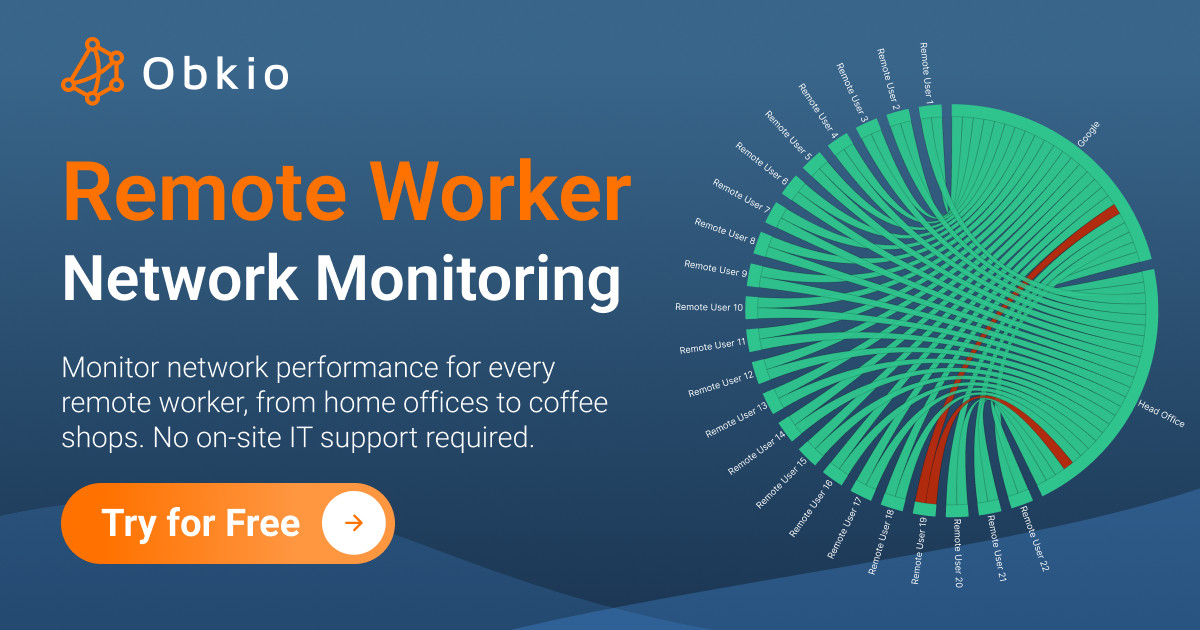













 Obkio Blog
Obkio Blog




